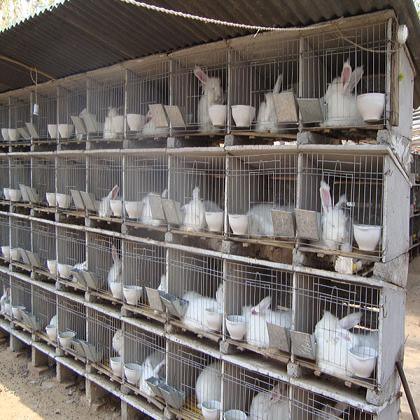Rabbit industry to generate US$2,5m revenue
THE local rabbit industry is projected to generate over US$2,5 million from domestic sales over the next five years in line with the aspirations of the Livestock Growth Plan.
The Livestock Growth Plan is part of the Agriculture and Food Systems Transformation Strategy the Government has launched with a view of growing the livestock sector to US$1,9 billion economy by 2025.
Over the years, country’s rabbit-rearing industry has been dormant but is now undergoing a massive transformation on the back of a raft of strategies being implemented by the Zimbabwe Commercial Rabbit Breeders Association (ZICORBA).
The association’s president Mr Regis Nyamakanga said that in the past, the local cuniculture remained largely underdeveloped as most of rabbit producers were backyard farmers.
However, he said the face of the local rabbit production sector has changed all that following the launch of ZICORBA in July last year.
“In just one year, we have seen an influx of people starting commercial rabbit ventures, driven by the availability of improved breeds, better housing standards, relatively affordable feed, on-going training and capacity building programmes and a potentially huge market for rabbit meat on the domestic and export market.
“Our projections are that over the next five years, the rabbit industry could easily generate an upward of US$2,5 million dollars from domestic sales.”
Mr Nyamakanga said this would be driven largely by access to affordable breeding stock, availability of funding, quick gestation period, broad-based participation in cuniculture production across the country, and availability of more rabbit abattoirs.
Zimbabwe’s first rabbit abattoir, which is export-approved, was completed in Harare in July to the tune of close to US$1 million.
A similar project, which would be the second of its kind in the country is expected to be established in Bulawayo in the next 12 months while satellite rabbit slaughter-houses will also be set up across the country in areas such as Masvingo, Mutare as well as Mashonaland West province.
The projected growth of the local cuniculture is also expected to be triggered by the envisaged uptake in consumption due to the health benefits of eating rabbit meat and the potential to export to countries such as China where demand is in excess of 400 000 tonnes per year.
Due to the dormant state of the local rabbit industry prior to the launch of ZICORBA, Mr Nyamakanga said they were no statistics on revenue the sector was generating.
“We know that the potential for this industry to play catalytic role in the growth and development of our economy, is unparalleled.
“Our plan as ZICORBA is to broaden the participation of our people in rabbit production over the next five years.
“Our special focus is on youth and women. In line with the Government’s five-year Livestock Growth Plan, we envisage a situation where the majority of the 1,8 million households in Zimbabwe will be actively participating in rabbit production over the next five years.”
Already, Mr Nyamakanga said, a number of schools, colleges and universities across the country have expressed strong interest in rabbit production.
Working with the relevant Government departments, ZICORBA plans to conduct a census of rabbit farmers in Zimbabwe to enable effective planning and catering for the rabbit producers.
Mr Nyamakanga said their thrust of broadening the participation of the majority of people in rabbit production will not only improve livelihoods, but will go a long way in creating employment and generating the much-needed foreign currency while contributing significantly to Zimbabwe’s Gross Domestic Product.
He noted that the massive interest in rabbit production in Zimbabwe over the past year and the recent construction of an export-approved rabbit abattoir in Harare placed the country on a good footing of becoming one of the major players in the rabbit industry in Africa.
“In just one year, ZICORBA has forged alliances with other rabbit farmers’ associations in Kenya, South Africa, Uganda, Mozambique, Mozambique, Eswatini (Swaziland), Nigeria and Botswana.
“We are currently talking to our counterparts in Zambia, Egypt and Ghana.
“We aim to be among the top three rabbit producing countries in Africa in the next five years,” added Mr Nyamakanga.
A total of about 1,5 million tonnes of rabbit meat is consumed per year globally, generating an upwards of US$7 billion in revenue.-The Herald











